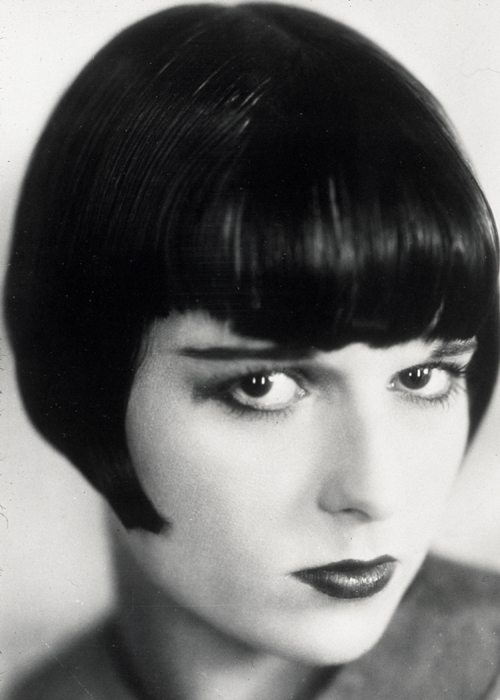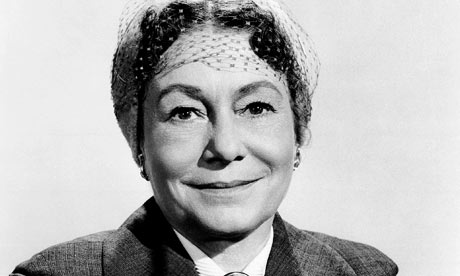Louise Brooks: A Feminist Ahead of Her Time by Victoria Negri
Brooks and her characters were powerful women, fighting for control of their lives. In Roger Ebert’s review of Pandora’s Box, he states, “Life cannot permit such freedom, and so Brooks, in her best films, is ground down—punished for her joy.” Her real life mirrored her characters, often being punished for her freedom and feminist power.
Ellen Page Is Like the Coolest Actress We Know, And She Doesn’t Even Have to Try by Angelina Rodriguez
The Unfinished Legacy of Pam Grier by Leigh Kolb
Grier’s legacy has lasted over four decades, but there’s something about her career that leaves me feeling unsettled, as if her filmography is indicative of larger (backward) social trends. She started out headlining action films–an amazing feat for a woman, much less a black woman in the early 1970s. A glance at a few of these films show incredibly feminist themes that are incredibly rare 40 years later. Her early films were groundbreaking, but nothing much was built after that ground was broken.
Carmen Maura: Pedro Almodóvar’s Essential Star by Ren Jender
Conveying a Soul: The Greatness of Meryl Streep by Cynhia Arrieu-King
From the feminist angle, Streep’s mold-breaking of the representation of women and her mark on scripts probably adds to her greatness in a way we can never completely measure because we can’t track it. One particular example worth mentioning is that the script for ‘Kramer vs. Kramer’ did not originally explain why Joanna Kramer wants to leave Ted (Dustin Hoffman) and she fought the director Robert Benton on the script until the character is allowed to say why herself.
Why Isn’t Naomie Harris in All the Movies? by Candice Frederick
To say that Harris is a revelation in this film may be an understatement. It not only prepared her to tackle the complex layers of Winnie Madikizela a few years later, but it also proved yet again that she is able to take on a variety of different roles–from heroic to villainous. She solidified a sci-fi fan base with her totally badass performance in 28 Days Later, showed that she can steal scenes from 007 himself, and continues to surprise audiences in roles across all genres.
Another Side of Marilyn Monroe by Gabriella Apicella
Her return to Hollywood in the film version of William Inge’s play Bus Stop was again a chance to shun the glamorous armour of her gold-digger characters, to explore the role of a downtrodden saloon singer with ambitions above her abilities. Not only did her performance stun the film’s director, Joshua Logan, who called her the greatest actress he ever worked with, but it also left critics in no doubt as to her ability.
Pre-Code Hollywood: When the Female Anti-Hero Reigned by Leigh Kolb
We agonize over the lack of female anti-heroes in film and television as if women have never been afforded the opportunity to be good and bad on screen. It clearly wasn’t always this way. And in a time when the regurgitated remake rules Hollywood, perhaps it’s time for producers to dust off some old scripts from the 1920s and 1930s so we can get some fresh, progressive stories about women on screen.
Read more about them. Watch their films. Remember who and what has been too easily forgotten.
Great Kate: A Woman for All Ages by Natalia Lauren Fiore
Most of the nine films Kate and Spence did together feature battle-of-the-sex plots which, at certain points, blurred or even reversed the roles women and men typically played in marital or committed relationships. These plots suited Kate’s life-long image of herself as inhabiting both female and male traits, particularly in the wake of her older brother’s tragic death.
Reflections On A Feminist Icon by Rachael Johnson
Possessing mass and cult appeal, the bilingual, Yale-educated Jodie Foster has, moreover, been popular with both mainstream and indie audiences. Although the adult Foster fulfills conventional ideals of female beauty, she has never been a traditional Hollywood sex symbol. She has been both a figure of identification and desire. In many of her roles, she personifies female independence, heroism and resistance. As an actress, she brings a naturalism, intensity and integrity to her performances. She engages audiences both intellectually and emotionally.
Whatshername as a Great Actress: A Celebration of Character Actresses by Elizabeth Kiy
Stop me if you’ve heard this one. A young woman–poised, talented, above all enthusiastic–performs a scene in acting class and is praised by the teacher. The teacher can’t say enough good things about the student, but the main thing she keeps going back to is, “I think you’d be a wonderful character actress!” Now, the student can’t help but beam about this, seeing a brilliant career flashing before her, her name up in lights. She steps back into the group and the woman sitting beside her whispers in her ear, “That’s what they call an actress who isn’t pretty.”















